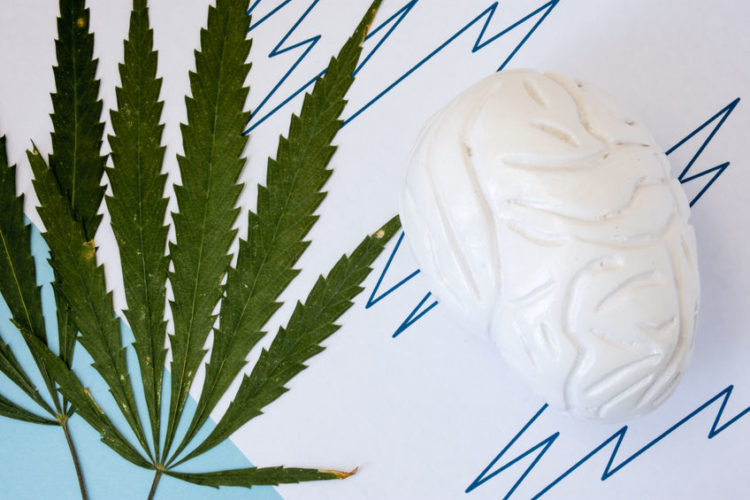Some may know of the CBD oil brand, Charlotte’s Web, but not many may know the story behind the brand and how its popularity helped change the belief of cannabis. It started with Charlotte, an infant who suffered from seizures due to epilepsy. She had as many as 300 seizures per week and doctors had no clue what was causing them, nor how to help her.
They later learned that Charlotte was suffering from Dravet syndrome, a severe type of epilepsy. Drugs were ineffective and her seizures continued to last 30 minutes each time. Nothing worked.
In November 2000, Colorado voters approved Amendment 20, which required the state to set up a medical marijuana registry program. This was something that Charlotte’s mother was initially against—now, it became her only hope.
The fact that Charlotte was a child caused many doctors to be hesitant about trying CBD oil, as its effects on children were not completely understood. This option often led to dead ends until a doctor finally decided to help.
With the doctor’s assistance, Charlotte found help via a strain with low THC and high CBD. It reduced her seizures down to one or two seizures a month. Marijuana helped save Charlotte.
Recently, the FDA approved one specific drug product, Epidolex , containing the purified substance cannabidiol, one of more than 80 active chemicals in marijuana, for the treatment of seizures associated with Lennox-Gastaut syndrome or Dravet syndrome in patients 2 years of age and older.
What is Epilepsy?
Epilepsy is a central nervous system (CNS) disorder with abnormal brain activity causing seizures and periods of changes in behavior and sensation, even loss of awareness. Anyone can develop epilepsy at any time. Surgery could be a permanent fix, however, many epileptics are offered these options as a last resort. A decision like that could take years.
During a seizure, there’s an excessive burst of electrical activity. Many different effects are taking place. There are mental changes including racing thoughts, strange, negative feelings and emotions, panic, racing heart, nausea, stiffening, tremors, and twitching. After a seizure, during the postictal state, people often suffer from strong emotions, confusion, headaches, nausea, imbalance, and fatigue.

Cause and Effect
There is no one cause of epilepsy. It could be genetic, some sort of head trauma, and brain conditions, such as strokes which is currently the leading cause. There is also a possibility to develop epilepsy due to a prenatal injury. Development disorders could be factors of seizures like Autism and Neurofibromatosis.
Types
Focal
Formerly known as Simple Partial Seizures, there is no loss of consciousness, however, it causes altered emotions, changes in sight, smell, feel, and sound. Moreover, staring, repetitive movement like rubbing, chewing, swallowing, walking in circles, tingling, and dizziness are involved. Flashing lights can ignite focal seizures.
Generalized
These seizures involve all parts of the brain. Absence seizures, once referred to as Petit Mal, are usually found in children. It could involve blank staring, subtle movement, blinking, lip-smacking occurring in clusters and brief loss of awareness. With tonic clonic seizures, known as Grand Mal seizures, the body becomes entirely rigid, and there is uncontrolled jerking. This can also cause unconscious violence.
Risks
There are a multitude of risks associated with epilepsies including head injuries, strokes, and other vascular injuries, to name a few. Other risks include brain infection, dementia, and high fevers in children.
With its exposure to complications, a person with epilepsy could suffer circumstances like falling while unconscious and drowning, since they may be unaware of their situation. A condition called Sudden Unexpected Death in Epilepsy (SUDEP) could also be a result of a seizure. Though the reason for death remains unknown, theories of heart and respiratory issues are the current answer.
Marijuana
A double-blind, controlled study was conducted using a placebo and cannabinoids in children to test cannabinoids’ effectiveness. One hundred twenty kids were studied for 14 weeks. They found that the CBD users with Dravet syndrome dropped from approximately 12.5 monthly seizures to about six. For placebo kids, seizures only fell from approximately 15 to slightly over 14. It is consistent with less demanding studies of Epidolex .
Epileptics and Triggers
Many seizures are triggered. The excessive brain activities can be ignited by lack of sleep, extreme heat, flashing lights, and obsessive stress to the mind and body, to name a few.
Many causes can be subdued by an indica strain which can relieve stress, insomnia, nausea, and pain. There’s still hope that some strains will actually prevent seizures.
Prescriptions
Epileptics may suffer side effects and will feel some of them for the rest of their lives. Many may suffer from depression, suicidal and homicidal thoughts, fatigue, stress, insomnia, and tremors. Marijuana has the potential to help relieve some of these effects as well.
Which Strains are Best?
There is a feeling of helplessness while on some medications, wanting to do everything but not having any energy to execute anything. Both sativa and indica strains can help with the prescription’s side effects. A mood-boosting sativa could provide the energy needed to override the fatigue. Additionally, those suffering from drowsiness can use a sativa strain to help them stay awake and accomplish daily tasks.
Most hybrid strains allow a person with epilepsy energy and stress relief while containing enough indica to provide needed relaxation.
Physical relaxation is needed as some epileptics deal with small tremors and the jitters. Indica strains that provide a body high may calm the physical effects. Higher dosages from an indica strain may help with insomnia.

